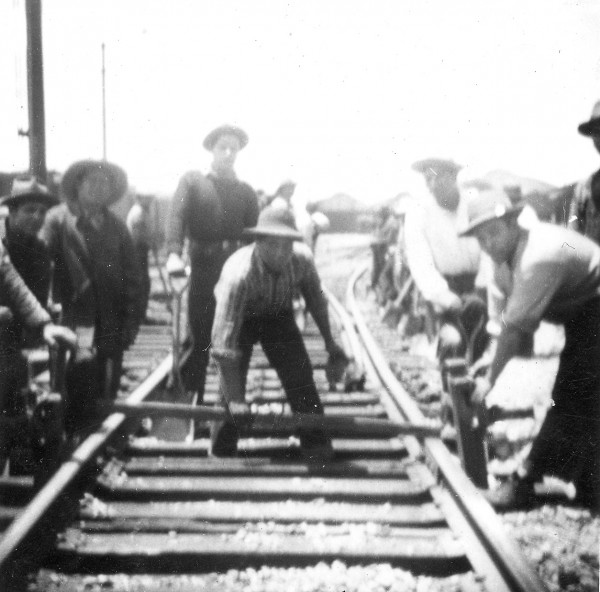World War II Homefront Era: 1940s: Bracero Program Establishes New Migration Patterns

 Click image to zoom in.
Click image to zoom in.Or view larger version. Bracero workers repair railroad track on the Southern Pacific Line, Oakland, California. 1944. Photographer unknown. Personal photograph. Collection of Oakland Museum of California. Gift of Jose Cruz.
Bracero workers repair track on the Southern Pacific line near the Oakland waterfront. From 1943 to 1945, approximately 100,000 Mexican workers worked on American railroads under a special provision of the Bracero agreement between the U.S. and Mexico. Conditions for railroad workers were far superior to those experienced by braceros in the fields. Rail workers had opportunities for job mobility and flexibility in location of work assignments, advantages that were unknown to farm laborers.